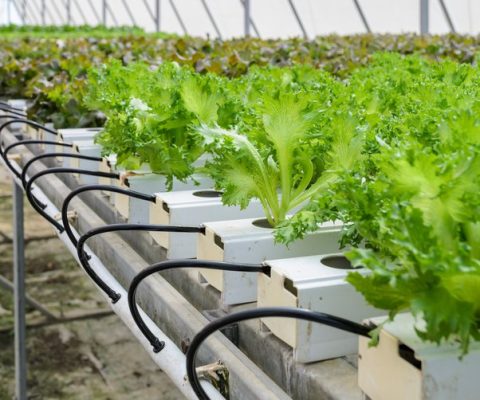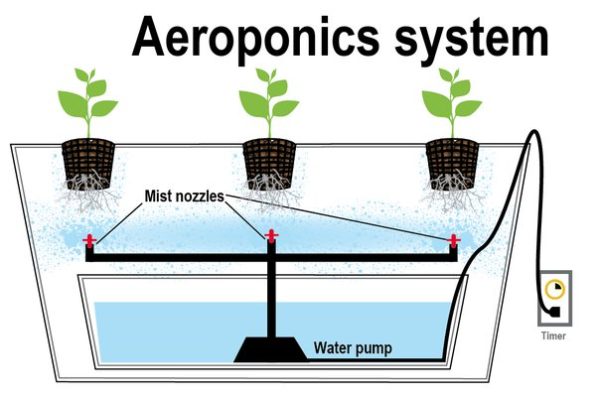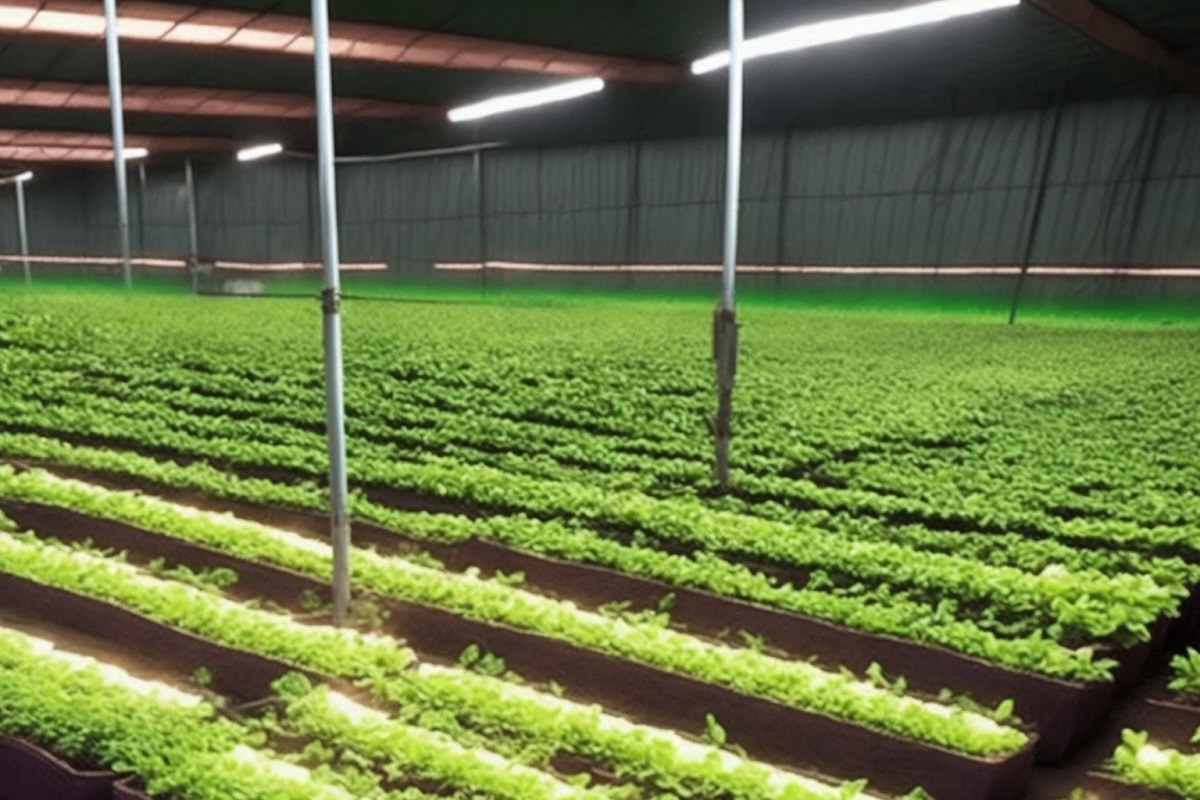The use of LED lights in indoor growing is becoming increasingly popular as they offer many advantages over traditional light sources. LED lights are energy-efficient, long-lasting and produce high-quality light that promotes plant growth and health. In this article, we present the principles and benefits of LED lights for indoor growing and give tips on their selection and use.
What is an LED light and how does it work?
LED is short for light-emitting diode. It is a semiconductor component that emits light when an electric current is applied to it. LED light has evolved significantly in recent decades and is now used in a wide range of lighting applications.
The benefits of LED light include energy efficiency, longevity and versatility. LED light consumes less electricity than traditional light sources such as incandescent or fluorescent bulbs, and produces more light with the same output. LED light also lasts longer than other light sources because it does not contain filaments or other easily broken parts. LED light is also a versatile light source, allowing you to adjust different colour tones and light intensities and create different shapes and sizes.
However, LED light also has some drawbacks that should be taken into account when designing lighting. LED light is generally more expensive to buy than other light sources, although it does save on electricity costs in the long run. LED light also generates heat, which can affect its performance and lifetime if it is not adequately cooled. The quality of LED light can also vary between manufacturers and products, and may be uneven or distorted in some cases.
How can LED lights be used in indoor farming?
LED lights are becoming increasingly popular for indoor growing as they offer many advantages over traditional light sources. LED lights consume less energy, produce less heat and last longer. In addition, the LED lights can be precisely controlled and their colour and intensity can be varied according to the needs of the plants.
There are different methods of indoor cultivation that use LED lights in different ways:
In hydroponics, plants grow in water with nutrients dissolved in it.
In aeroponics, plants are suspended in the air and sprayed with a nutrient solution. In vertical farming, plants are grown in vertical planes or structures that save space and allow for dense cultivation.
Here is a clearer explanation of the terms.
Hydroponics

Hydroponics is a method of cultivation in which plants get all the nutrients they need in solution in water. The plants do not need soil or any other growing medium, but are attached to some sturdy material such as coconut fibre, vermiculite or rock wool. The roots of the plants are either directly under water or regularly sprayed with a nutrient solution. Hydroponics allows plants to be planted more densely and yield better crops than conventional farming. Hydroponics can also be used in places where the soil is poor or water is scarce. Hydroponics is an environmentally friendly farming method, using less water and fertiliser than agriculture and reducing soil erosion and pollution.
In aeroponics, plants are suspended in the air and sprayed with a nutrient solution. This is a landless farming method that produces better yields than traditional farming, both in terms of quality and quantity. Aeroponics replaces soil action with air or fog in crop production. In vertical farming, plants are grown in vertical planes or structures that save space and allow for dense cultivation. Vertical farming is a fast-growing sector with new technologies. Aeroponics is often used in vertical farming .
Aeroponics

In aeroponics, plant roots are mostly exposed to the air without a growing medium. Nutrients and water are sprayed on the roots as a mist or fine droplets at regular intervals. Spraying usually takes place in a closed chamber with lights and temperature control. Irrigation provides optimal oxygen and moisture supply to the roots and reduces water and nutrient consumption. In vertical farming, aeroponic systems can be stacked on top of each other or mounted on walls or other vertical surfaces. This allows more crops to be grown in a smaller area and with less labour than traditional farming.
LED lights can be used to control the light needs of plants and optimise their growing conditions. Plants need different wavelengths of light at different stages of their life cycle. For example, blue light promotes leaf growth, red light promotes flowering and fertilisation. LED lights can be used to create different light spectra and simulate the variation of natural light.
In indoor farming, LED lights have become more common, especially in cities where agricultural land is limited or expensive. In Singapore, for example, the world’s largest vertical plantation using LED lights and hydroponics has been built.
In London, an aeroponic farm has been developed from a former bunker to produce fresh herbs and salads for city dwellers.
Also in Finland, the use of LED lights in indoor cultivation has been experimented with, for example for growing tomatoes and strawberries.
What are the advantages and challenges of using LED lights for indoor growing?
LED lights are becoming increasingly popular as a light source for indoor lighting, as they offer many advantages over traditional fluorescent or other lighting methods. LED lights can save energy, reduce heat gain and select the right light spectrum according to the needs of the plants. LED lights also last longer and are more environmentally friendly than fluorescent tubes.
However, the use of LED lights also has some challenges and limitations in indoor growing. LED lights are generally more expensive than fluorescent tubes, and their installation often requires changes to the luminaire design or the electrical network.
LED lights also produce a different kind of light than natural light, which can affect plant growth, morphology and chemical composition in different ways. The effects of LED lights on plants are still relatively poorly understood, and different plant species and varieties may react differently to them.
Here’s more detail on the pros and cons.
Advantages of indoor growing
LED lights are increasingly popular as a light source for indoor growing, as they offer several advantages over traditional fluorescent or incandescent bulbs. In this article we will discuss the benefits of LED lights for indoor growing in terms of energy efficiency, light quality, lifetime and environmental friendliness.
Energy efficiency
LED lights use a fraction of the energy to produce the same amount of light as conventional light sources. For example, an LED light can produce 100 lumens of light with only 1 watt of power, while an incandescent bulb needs 10 watts and a fluorescent bulb 5 watts. This means that LED lights save significantly on electricity costs and reduce carbon dioxide emissions.
Quality of light
LED lights are very versatile light sources, as their colour spectrum and light output can be precisely adjusted to the needs of the plants. LED lights can produce different wavelengths of light that affect plant photosynthesis, growth and flowering. For example, blue light promotes the development of plant leaves and red light promotes the formation of flowers. LED lights can also simulate natural daylight and circadian rhythms, improving plant health and quality.
Lifespan
LED lights are very durable and long-lasting light sources. They have a lifetime of up to 50 000 hours, which is about 50 times longer than an incandescent lamp and 10 times longer than a fluorescent tube. This means that LED lights do not need frequent replacement and do not cause waste or disruption to plant lighting.
Environmental friendliness
LED lights are environmentally friendly light sources in many ways. They do not contain mercury or other harmful substances that could end up in nature or in the human body. They also do not emit heat or UV radiation that can harm plants or people. In addition, LED lights are recyclable and reusable, reducing waste and saving natural resources.
Challenges in indoor farming
Indoor farming is one way to produce food in an environmentally friendly and efficient way. In indoor growing, plants are grown in enclosed spaces where their growing conditions can be precisely controlled. One of the most important factors in indoor growing is lighting, which affects the growth, quality and nutritional value of plants. LED lights have become popular in indoor growing because of their many advantages: they are long-lasting, energy-efficient, low heat-generating and their light spectrum can be adapted to the needs of different plants.
However, the use of LED lights also has its challenges in indoor growing. One challenge is to find the optimal light spectrum for each plant species and growth stage. Different plants respond differently to different wavelengths and intensities of light, and the effect of light can also vary according to the age and development of the plant. The choice of light spectrum is also influenced by the objectives of the crop: for example, to maximise yield, improve quality or increase the amount of health compounds in the plants. Optimising the light spectrum therefore requires a lot of research and experimentation.
Another challenge is the cost of LED lights. Although LED lights save energy and reduce maintenance compared to traditional light sources, they are still expensive to buy. In addition, the use of LED lights requires a separate control system, which increases investment costs. The profitability of indoor farming depends on how much the use of LED lights increases yield and quality relative to cost.
The third challenge is the environmental impact of LED lights. Although LED lights are more environmentally friendly than many other light sources, their manufacture and disposal cause environmental pollution. LED lights contain heavy metals and other harmful substances that can end up in the environment if they are not recycled properly. It is therefore important to assess and minimise the environmental impact of the life cycle of LED lights.
In summary, LED lights are a promising technology for indoor farming, but there are challenges in their use that require solutions. The benefits and drawbacks of using LED lights depend on many factors, such as the crop being grown, the objectives of the crop, the light spectrum, the cost and the environmental impact. The indoor grower must therefore weigh these factors carefully before introducing LED lights.
Leafy cabbage Led under light
For example, the chemical composition of kale has been found to be affected by the spectrum, or colour of light, of LED lights. In the study, kale was exposed to three different LED light spectra with varying proportions of blue and red light.
The study was published in the journal Scientia Horticulturae in 2018 and is entitled“Influence of blue/red vs. white LED light treatments on biomass, shoot morphology, and quality parameters of hydroponically grown kale“.
The results showed that the red spectrum increased the glucosinolate content of kale, a compound that is beneficial to health, but also caused the most visible damage to the plants.
The blue spectrum, on the other hand, reduced glucosinolate levels but did not cause damage. The most balanced spectrum was one in which the proportions of blue and red light were approximately the same.
The use of LED lights in indoor farming is therefore a versatile and promising area that offers both opportunities and challenges. In order to make use of LED lights, it is important to study their effects on plants and the environment and to develop their technology and suitability for different situations.
Summary
In this article we have looked at the use of LED lights in indoor growing and their benefits for plant growth and quality. LED lights are energy-efficient, long-lasting and versatile lighting solutions that allow you to grow a variety of crops all year round.
LED lights also provide better light quality than traditional bulbs, as they can be adjusted to suit the needs of different plants. LED lights are therefore a good alternative for indoor growing, which is becoming increasingly popular in urban environments.
Frequently asked questions
Why are LED lights good for indoor growing?
LED lights are good for indoor growing because they offer energy efficiency, longevity and better light quality than conventional lights.
LED lights consume less energy, last longer and produce a uniform and bright light that is suitable for plant growth.
What are the benefits of LED lights for growing flowers?
LED lights bring many advantages to flower growing, such as
- a longer growth cycle
- the most abundant flowering
- the most beautiful colours
- better quality
LED lights can compensate for the lack of sunlight indoors and provide optimal illumination for flowers. LED lights also stimulate photosynthesis and hormone production in flowers, which contributes to their health and vitality.
How to install and use LED lights in indoor gardening?
LED lights are usually installed and used indoors by hanging them above the plants or fixing them to the walls or ceiling.
The distance of LED lights from plants depends on their efficiency and light output. It is generally recommended that LED lights are placed about 30-60 cm away from the plants. The hours of use of LED lights will vary depending on the species and stage of the plant, but generally it is around 12-16 hours per day.
What features of LED lights should be considered for indoor growing?
For indoor LED lights, particular attention should be paid to their power, spectrum and design.
The wattage tells you how much energy an LED consumes and how much light it produces. The spectrum tells you what colours the LED light contains and how well they suit the needs of the plants. The design tells you how well the LED light distributes light evenly and how easy it is to install and adjust.
Where can I buy LED lights for indoor growing?
LED lights for indoor growing can be bought in many different places, such as online shops, garden centres or specialist shops.
Online stores offer a wide range of LED lights in different price ranges and delivery options.
Garden centres can provide expert service and advice on the selection and use of LED lights.
Specialist retailers can find high quality LED lights tailored to specific needs.
Led lighting expert
LedStore has been an expert in led lighting since 2010. We have our own product design, so our products are technologically state-of-the-art.
We focus on light colour temperature controlled and high colour rendering index lights. We do around 500 lighting designs in a year.
We offer a service of custom made led strips, i.e. custom made led light strips in profile. Also installed.
Remember that we are always ready to offer our help to you along the way, by email (myynti@ledstore.fi) and by phone (045 251 4510). As always, feel free to share photos of your own projects on social media at ledstore.fi at Instagram and ledstore.fi at Meta. We love to see the cool things done by our LEDs, and it also helps to provide inspiration for those who are not sure about the power and awesomeness of LEDs. Did you know that we already have over 3500 pictures of our LED installations in our Gallery!
Gallery of Led lights:
Product gallery: Pictures of products in different installation locations
Indirect light: Indirect light in different spaces
Room-specific: Light in different rooms
References: Complete houses that have been photographed

